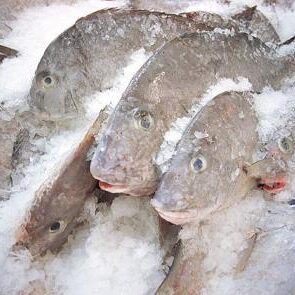


There is nothing like a fish caught and eaten in the same day, however did you know that fresh seafood, snap frozen at sea, is usually fresher than the non frozen fish bought at the seafood shop or restaurant?
Most fish sold frozen is now cleaned, filleted, and frozen right on the boat within an hour of the catch, preserving its freshness. The rapid process used ensures the ice crystals within the flesh are minute; this allows for minimum water absorption and destruction of the flesh. If then transported home and stored correctly, when cooked (or defrosted) it should then be virtually indistinguishable from fresh fish fillets.
There are advantages and disadvantages for both fresh and frozen and this depends on the situation. In many cases frozen can be better than ‘fresh’ if you do not want to cook it in the next day or so. Remember that ‘fresh’ (unfrozen) seafood can be up to six days old by the time it gets through the supply chain and onto your table at home.
Buying frozen seafood has the advantage of not having to cook it straight away. You can store it until required and in most cases defrost only what is required. It is recommended that the storage life of seafood is three months.
To thaw frozen seafood, thaw slowly in the refrigerator for 24 hours or, if you’re in a hurry, you can run the tightly wrapped fish under COLD water instead of at room temperature. Cook it as soon as possible to minimize the loss of juices. Try not to thaw frozen fish completely before cooking, or it may make them very dry and mushy.
Most frozen imported fish products are low in omega-3 fats — and aren’t as cheap as you’d think.
To determine if a fish has been properly frozen, as with fresh fish check its appearance: it should be somewhat shiny and have no white freezer-burn spots. It should be hard as a rock, showing no evidence of previous defrosting.